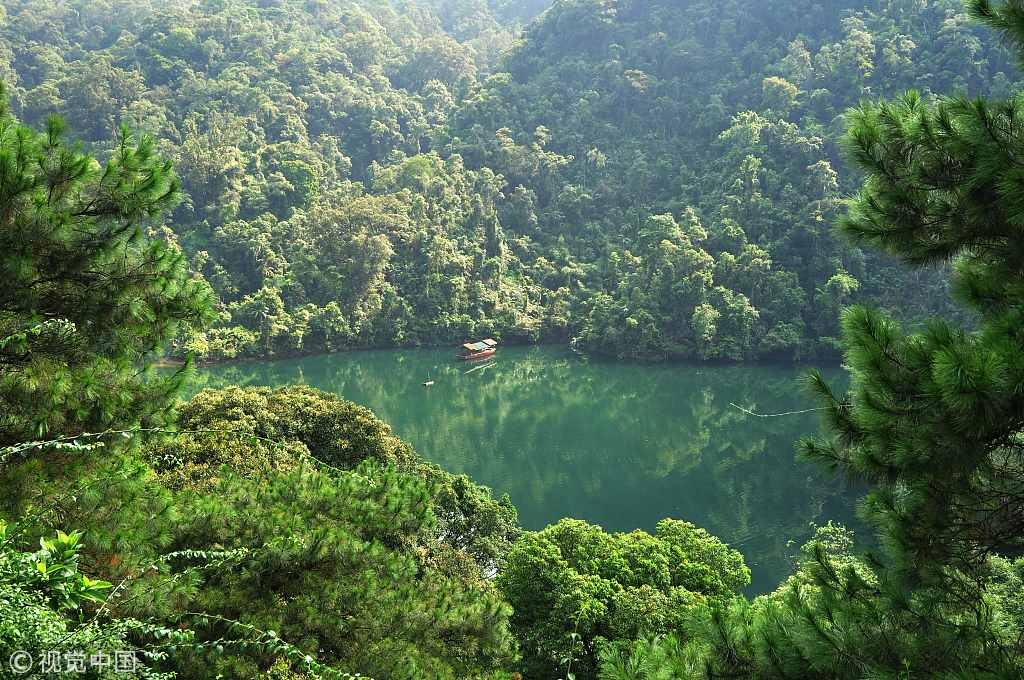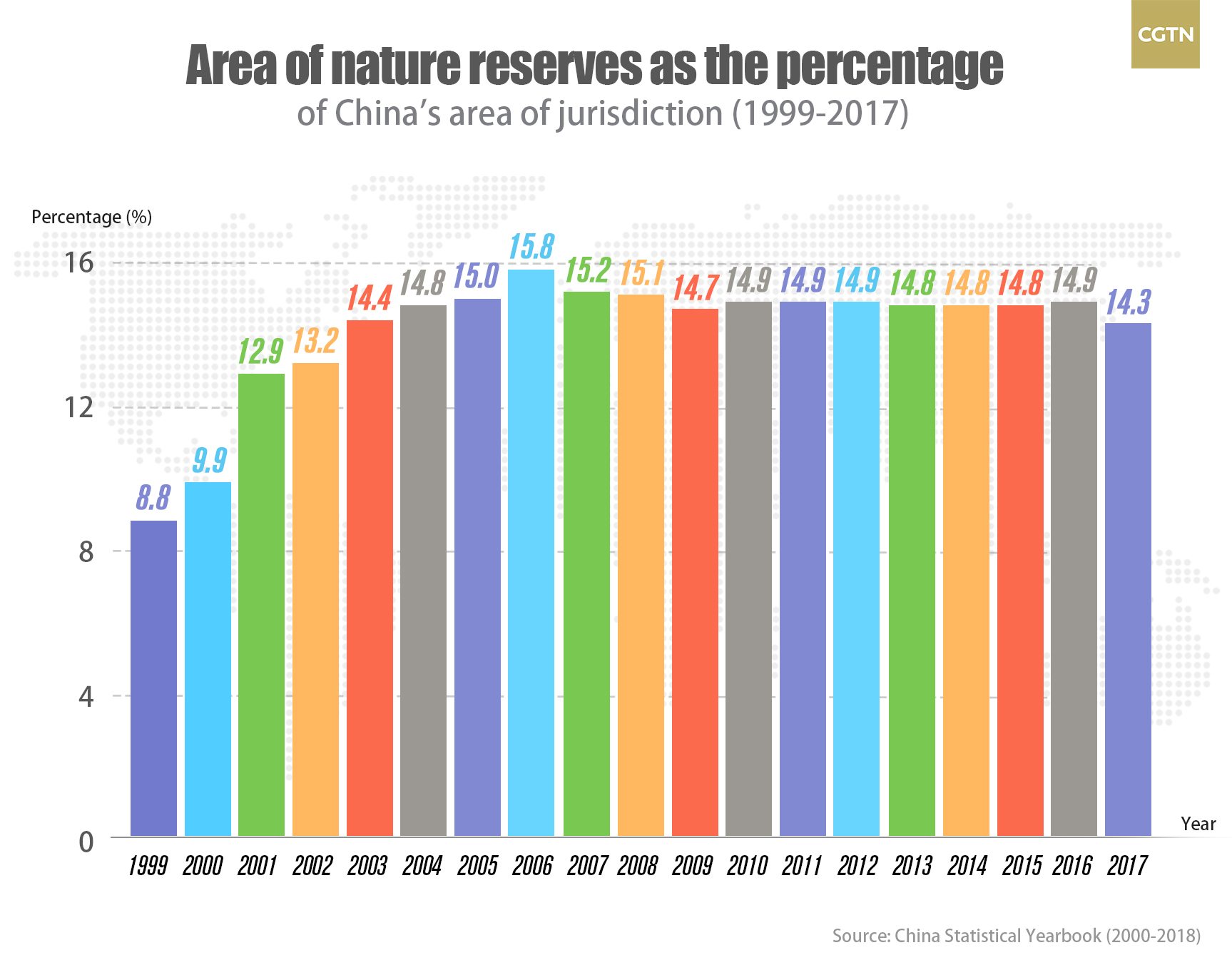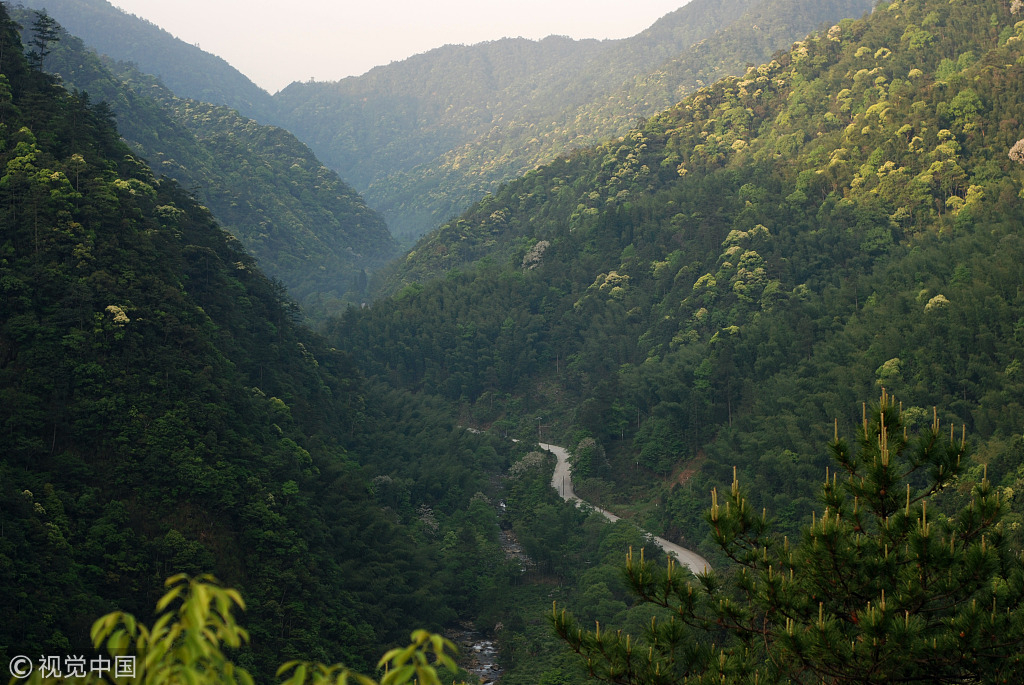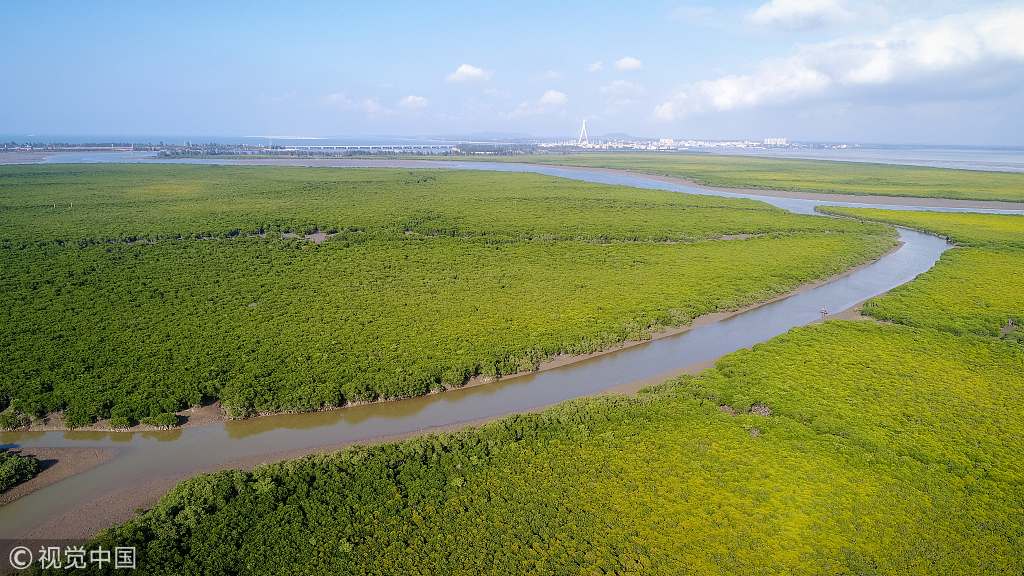
Earth
08:53, 22-Feb-2019
China's nature reserves 60 years on
By Zhu Yingming

Seven years after the founding of New China in 1949, Dinghu Mountain National Nature Reserve in south China's Guangdong Province became the country's very first nature reserve.
The development of China's nature reserves remained almost stagnant at first. Only 34 nature reserves were established in the first 20 years before the start of reform and opening-up in 1978, covering 0.13 percent of the total jurisdiction area.

Dinghu Mountain, Guangdong, China /VCG photo
Dinghu Mountain, Guangdong, China /VCG photo
Along with the sea change in all the sectors during the following 20 years, the number of nature reserves grew enormously to 1,146, which means 55 new locations added every year, according to the China Statistical Yearbook 2000 compiled by the National Bureau of Statistics.
In the first decade of the 21st century, China established about 1,400 new nature reserves. 85 percent of both the terrestrial ecosystem types and China's key protected wildlife species came under protection during this period.

Number and area of nature reserves in China (1999-2017) /CGTN Graphic
Number and area of nature reserves in China (1999-2017) /CGTN Graphic
China's nature reserves have seen high-quality development in the past decade, with a focus not just on the number or size anymore, but on their management and harmonious coexistence with human society.
The competent authorities and the academia have come up with a consensus on controlling the scale, improving the quality, and optimizing the structures of these nature reserves.
Although there has been a yearly increase of about 20 new locations, the total area of nature reserves has remained about 14.9 percent of China's area of jurisdiction in recent years.

Area of nature reserves as the percentage of China's area of jurisdiction (1999-2017) /CGTN Graphic
Area of nature reserves as the percentage of China's area of jurisdiction (1999-2017) /CGTN Graphic
Based on NASA satellite data, a recent study showed China has been a major contributor to global new leaf areas in the past 20 years. The growing number of nature reserves play a significant role in this, and also biodiversity conservation.
By the end of 2017, there were 92,301 known species and subspecies being recorded in China. Among them, 3,767 out of 34,450 higher plants and 932 out of 4,357 known vertebrates (except ocean fish) are listed as "Threatened species," according to the Bulletin of Ecological Environment of China 2017.

Wuyi Mountain Nature Reserve, China /VCG Photo
Wuyi Mountain Nature Reserve, China /VCG Photo
The total area of nature reserves in China ranks second place in the world. With the forest area of 208 million hectares, about half of the country's nature reserves are forestry-type. Other major types of nature reserve include wild animal and plant types and inland wetland type.
Located in China's southernmost Hainan Province, Dongzhai Port Nature Reserve is the first wetland-type national nature reserve for the mangrove ecosystem in China.
97 percent of the country's mangrove types can be found in the mangrove forest area of 1,578 hectares. It is home to Black-faced spoonbill and many other animals that are under state protection.

Dongzhai Port Nature Reserve, Hainan, China /VCG Photo
Dongzhai Port Nature Reserve, Hainan, China /VCG Photo
Along with the ongoing forest development, the improving nature reserves are also one of the major actions that China take to green the planet.
It is one small step towards making a better eco-civilization, but it will benefit all living creatures in the long run.
(Cover image: Shennongjia, Hubei, China /VCG Photo)
(If you want to contribute and have specific expertise, please contact us at nature@cgtn.com.)

SITEMAP
Copyright © 2018 CGTN. Beijing ICP prepared NO.16065310-3
Copyright © 2018 CGTN. Beijing ICP prepared NO.16065310-3